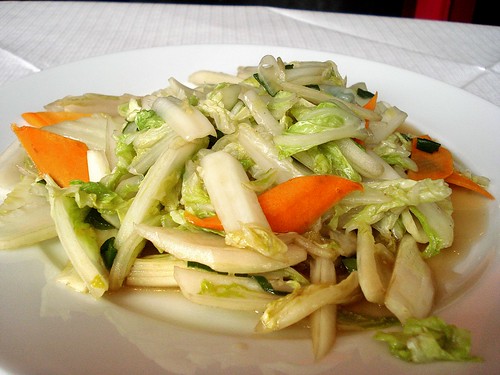I've previously discussed Chinese keyboard input via pinyin, but I've recently also been playing with handwriting input.
For reasons I'll describe below, I bought a Wacom Bamboo graphics tablet about a month ago. Sadly, my (OS X) laptop has no native support for inputting Chinese characters via handwriting — apparently only MacBooks with multitouch trackpads can do that, regardless of peripherals. (Note: iPhone owners might want to check out Finger, though I haven't tried it.) The tablet does come with its own input software, but it's a bit clunky — you can only enter one character at a time, and if you hesitate for a moment in the middle of writing it, it will make a (usually wrong) guess at what you intended and you'll have to start over. So I'm sticking with pinyin for now.
The reason I bought the tablet, though, was Skritter. This is an online tool that lets you practise writing Chinese (and Japanese) characters. It does cost money (just under US$10/month at the time of writing), but they offer a two-week free trial [see footnote].
The idea behind Skritter is pretty simple — to make character-writing practice easy and enjoyable. And it works! I knew within half an hour of starting to play with it that I'd be keeping up my subscription at the end of the free trial, and by the end of the next day I'd ordered my graphics tablet because I found it so frustrating to have to stop "playing" when my hand was aching from using the trackpad to write the characters.
The Skritter site supplies a number of character/word lists that you can learn from, but it also gives you the facility to make your own lists, which is very useful for someone like me who only wants to learn characters from a specific context. Like Anki, it uses spaced repetition algorithms to choose sensible intervals for retesting you on each word or character. Another very nice feature is one mentioned by a comment on a CNET post — [...] it draws beautiful characters, which makes me feel good everytime, much better than when I try to write on a piece of paper.
— a post on the Plot Hatching Factory blog goes into this issue in more detail.
Learning to write may seem like a sidetrack from my goal of learning to read Chinese menus, but I've found that it's very helpful in terms of remembering the characters, learning to differentiate between similar-looking characters, and reading characters that are printed in a blurry or unusual font.
Finally, a note on ergonomics. When I first started using the Bamboo tablet, it made my hand ache/feel numb after a few minutes of use, but I figured out that this was due to my tendency to steady my hand by sticking out my little finger and resting it on the tablet. I stopped doing this, and the problem went away.
Footnote: [0] You need to supply credit/debit card details for the free Skritter trial, and will need to explicitly cancel if you decide not to continue after the two weeks. They do send a couple of reminders though. If you're thinking of giving it a go, you can use my referral link, which will give you two extra free weeks if/when you make your first payment (I also get two free weeks if you do this, but if that bothers you then I can always buy you a pint in return, or something).












![Excerpt from the Le Wei Xiang menu An excerpt of a menu reading thus: 蔬菜 - Veg. 空心菜 (清炒, 熗炒, 蒜蓉, 上湯) — Tong cai (plain fried, stir [...]). 芥蘭 (清炒, 蒜蓉, 上湯, 白灼, 蠔油) — Fried Gai-Lan (plain fried, garlic, in soup [...]).](https://farm5.static.flickr.com/4100/4804933185_da925d0f83_d.jpg)
